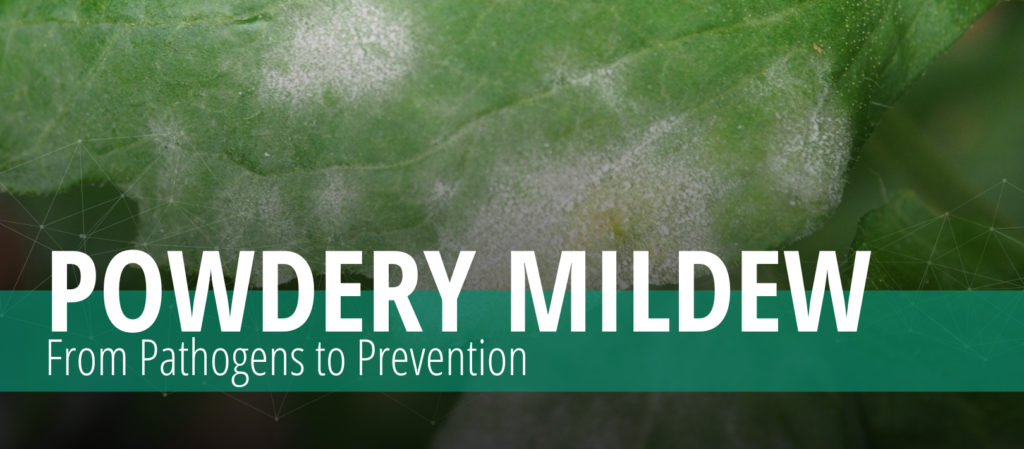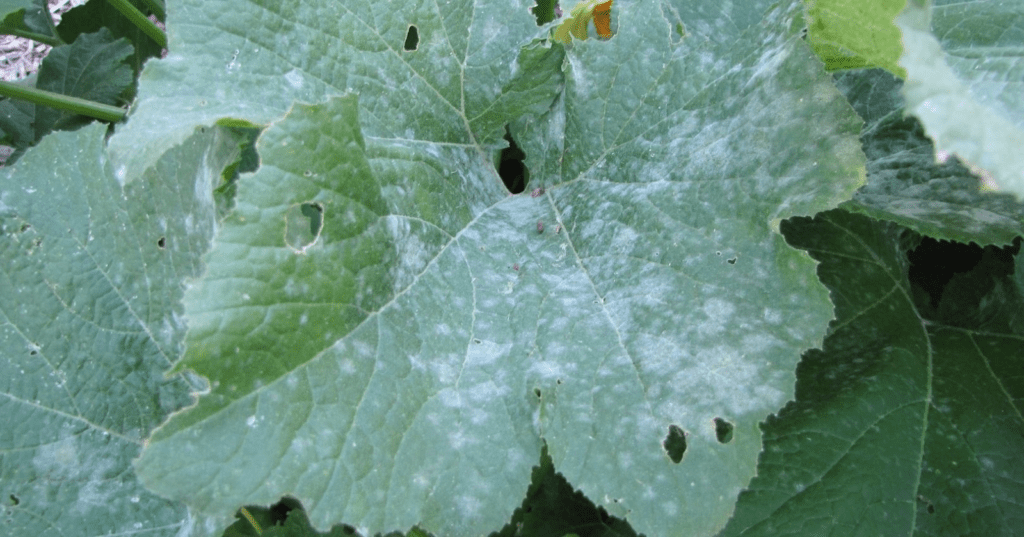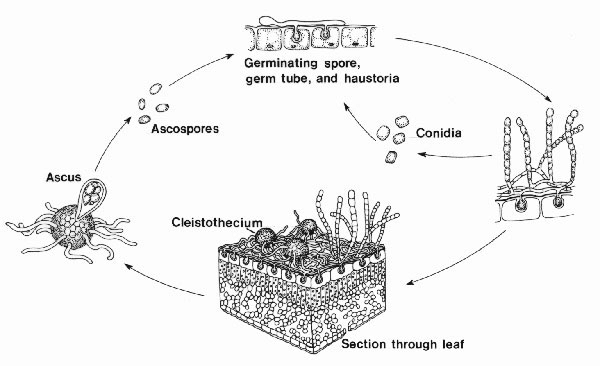Борошниста роса - тиха загроза, що ховається у ваших посівах
Від патогенів до профілактики.
Борошниста роса - одна з найпоширеніших хвороб рослин у всьому світі. Вона вражає листя, стебла і навіть плоди багатьох покритонасінних рослин. Оскільки це хронічна інфекція, вона є постійною важливою проблемою, яка вражає багато різних культур по всьому світу.

ПАТОГЕН І КУЛЬТУРИ
Борошниста роса належить до порядку Erysiphales а патогенні поширені в різних родинах і родах. Кожен вид викликає борошнисту росу на різних культурах. Таксономія грибів борошнистої роси неодноразово переглядалася. Якщо раніше морфологічним ідентифікатором для розрізнення родів слугували придатки, то тепер вчені застосовують молекулярно-філогенетичний аналіз.
Ось деякі з патогенних видів та культури, які вони вражають:
- Uncinula necator Виноградна лоза
- Podosphaera aphanis - Полуничка.
- Podosphaera clandestina - підпільна - Черрі.
- Podosphaera xanthii - Podosphaera xanthii - Огірок, диня, гарбуз, кабачок
- Сферотека Панноса - Абрикос, Персик і нектарин
- Блюмерія зерниста - Blumeria graminis Пшениця
- Phyllactinia guttata - Фундук
- Leveillula taurica - левеїлула таврійська Помідор.

СИМПТОМИ

Як випливає з назви, білий поверхневий міцелій і конідії з'являються на листках і стеблах, завдяки чому його легко виявити. Плями збільшуються і стають щільнішими в міру розвитку хвороби. Інші типові симптоми включають некротичні плями, передчасне опадання листя, загальне зниження росту, деформацію плодів і хлороз. Суцвіття та ягоди найбільш вразливі, коли вони молоді, і можуть бути повністю вкриті мілдью. Сильна інфекція може перешкоджати росту плодів.
ЖИТТЄВИЙ ЦИКЛ

Життєвий цикл борошнистої роси зазвичай починається з потрапляння конідій або аскоспор на рослину-господаря та їх проростання, хоча слід зазначити, що аскоспори виявлені не у всіх видів борошнистої роси. Утворюється одна або дві зародкові трубки, які слугують інструментом проникнення. Гриб безпосередньо проникає в клітинну стінку хазяїна завдяки ферментативній активності та тургорному тиску. Після розпаду гриб розвиває гаусторій, який забезпечує його поживними речовинами.
Борошниста роса розмножується як безстатевим, так і статевим шляхом. Безстатеве розмноження починається через кілька днів після зараження. З вегетативних гіф з'являються конідієносці, з яких серійно утворюються конідії. Потім конідії розносяться вітром на відносно невеликі відстані.
Коли безстатевий період вегетації закінчується, статеве розмноження відбувається за допомогою хазмотеціїв - невеликих круглих плодових тіл, що містять аски, спеціалізовані мішечки, в яких утворюються аскоспори. Коли ядро з чоловічої гаметангії переміщується до жіночої гаметангії шляхом плазмогамії, утворюється дикаріотична клітина, з якої розвиваються аски. Кількість аскоспор в одній аск варіює у різних видів від двох до восьми. За сприятливих умов хазмотеції розкриваються і вивільняють аскоспори.
Гриби борошнистої роси зимують у кількох формах - хазмотеції, брунькове багаторіччя та міцелій знову стають активними, коли навесні відновлюються сприятливі умови.
ЯК METOS МОЖЕ ВАМ ДОПОМОГТИ?
Борошниста роса є постійною загрозою для багатьох культур, але за допомогою рішень METOS ви можете відстежувати та запобігати спалахам хвороби до того, як вони трапляться. Оскільки гриби борошнистої роси значною мірою залежать від умов навколишнього середовища, важливо точно контролювати стан і ризик захворювання.
РОЗКРИТИ МОЖЛИВОСТІ ТЕХНОЛОГІЙ ДЛЯ ФЕРМЕРСТВА
METOS має інструменти для попередження виникнення різних захворювань, включаючи борошнисту росу, на різних культурах за допомогою різних типів датчиків. Завантажте наш детальний посібник і дізнайтеся більше:
- Як погода та умови навколишнього середовища впливають на ризик захворювання
- Правильні датчики для ваших конкретних культур
- Чому розумний моніторинг хвороб покращує захист рослин
Не дайте хворобам взяти верх!
Забирай свою БЕЗКОШТОВНИЙ ПУТІВНИК сьогодні.

